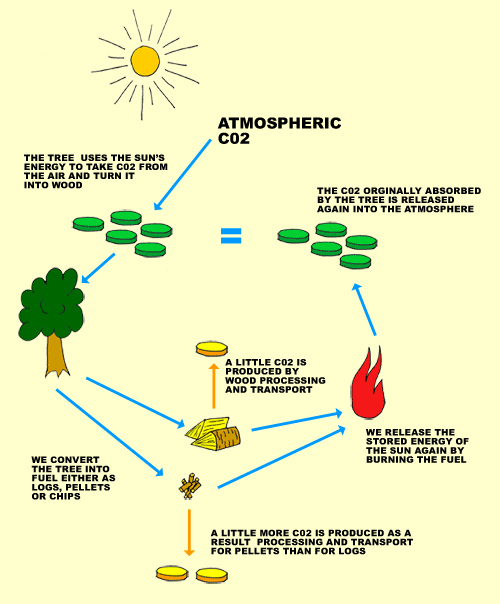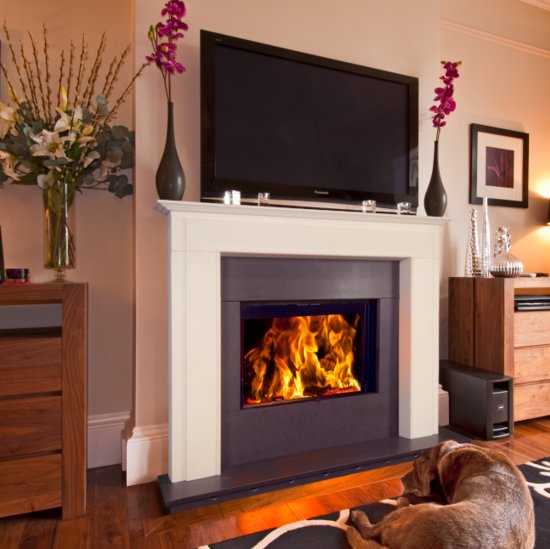Firewood CO2 cycle

As you can see the picture above illustrates that sustainably sourced firewood, wood pellets, and other biomass has a relatively low effect on CO2 level in the atmosphere. This is because for every tree that is burnt another takes it's place and by simply growing absorbs the CO2 that was released by burning the first tree - simple.
Obviously some CO2 is produced as a result of the processing and transport of the fuel.
If timber is of building quality, and would be used for building with otherwise, then it is better to use this wood for building with and other parts of the tree for burning. Timber production is a little limited in the UK for a variety of reasons some historical, some to do with our climate, and in fact woodfuel production and building timber production often go hand in hand.
Some people sometimes try to argue that firewood should not be classed as low CO2 because CO2 is still given off at the time it is burnt. This misses the whole concept of climate change modelling and is looking at the system as a snap-shot, not as an ongoing cycle. The IPCC (Intergovernmental Panel on Climate Change) is the UN scientific and intergovernmental body which models and predicts climate change. All the predictions and models rely on various life-cycle calculations, which make no sense taken as a snapshot. As an example: the GWP (Global Warming Potential) of a gas is how much more (or less) the gas will warm the earth compared to CO2, which has a GWP of 1.
This is typically measured over 20, 100 or 500 years. Methane traps far more heat but, unlike CO2, only lasts around 12 years in the atmosphere. Over 20 years methane has a GWP of 86, over 100 years its 34.




















































